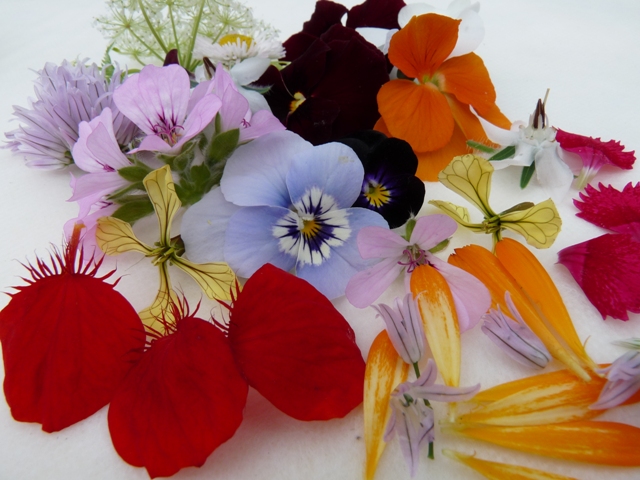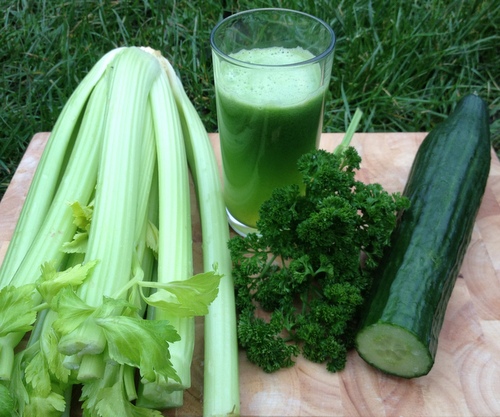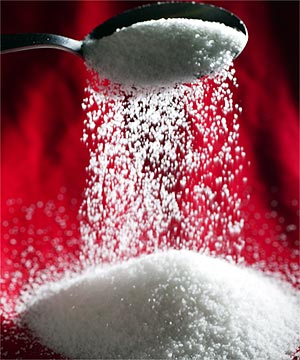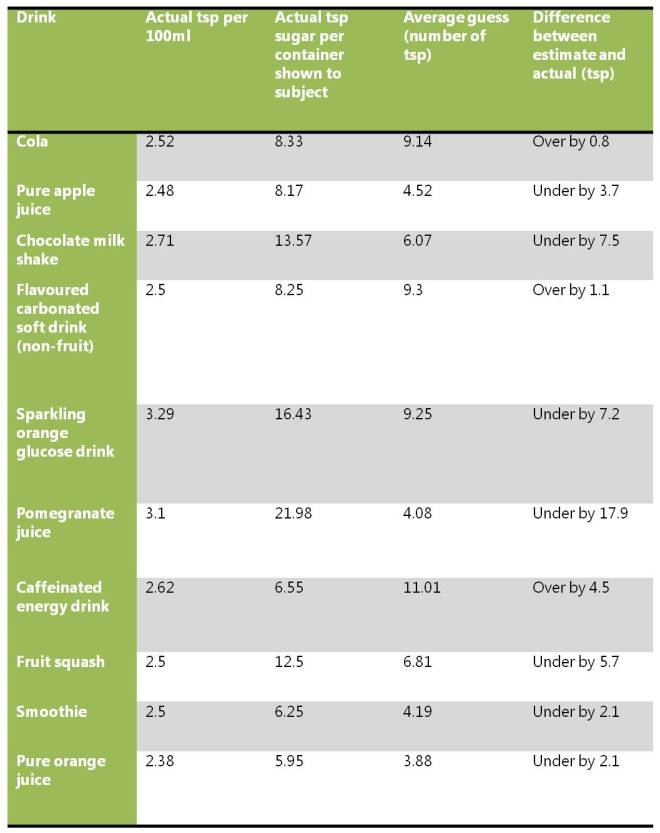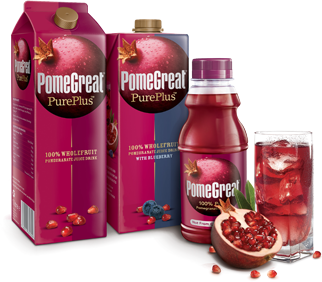I came across this little poem the other day:
I wonder if the cabbage knows
He is less lovely than the Rose;
Or does he squat in smug content,
A source of noble nourishment;
Or if he pities for her sins
The Rose who has no vitamins;
Or if the one thing his green heart knows
That self-same fire that warms the Rose?
This made me think.
Is it true that the rose has no vitamins?
The Chinese were the first to experiment with flowers as food and their many and varied recipes can be traced back as far back as 3,000 B.C.
In Roman times, the edible flowers of pinks, violets and roses were used in dishes, and lavender in sauces.
Gardeners and cooks over 1000 years ago were already using pot marigolds and orange blossom in their cooking and edible flowers were especially popular in the Victorian era.
After falling out of favour for many years, flower cookery is now back in vogue.
Innovative chefs in fancy restaurants have taken to garnishing their entrees with flower blossoms for a touch of elegance.
But do flowers only have aesthetic value in cooking?
Or do they have nutritive value too?
Of course, this is a bit of a trick question because we are already familiar with eating flower heads.
Broccoli and cauliflower are good examples and we know that they are packed with vitamins, minerals and other beneficial substances which act as antioxidants.
But what about the sort of flowers which are usually grown for ornamental purposes, like roses and pansies?
Nutrient content of edible flowers
I have searched high and low in the scientific literature for quantitative data on the nutrient content of flower petals. There are relatively few references, particularly in English.
Most of the literature is focused on evaluating flowers for their sensory characteristics, such as appeal, size, shape, colour, taste, and above all, aroma, which is important for the cosmetic and perfume industry.
The references I have found in journals from researchers in Turkey, Bosnia, Poland, South Korea and China among others, suggest that the common components – proteins, fats and carbohydrates – are present in similar amounts to those in other plant organs, e.g., in leaf vegetables (1).
Available data on a number of edible flowers show that petals also contain an array of vitamins and minerals, particularly vitamins A and C, various B vitamins, folic acid, and minerals including calcium, magnesium, potassium, iron and phosphorus.
The data in this table were compiled from sources in the list of references below (1-7).
|
Flower |
Protein
|
Carb
|
Fat
|
Vit A
|
Folate
|
Vit C
|
Ca
|
Fe
|
Mg
|
K
|
|
|
g/100g |
IU |
μg/100g |
mg/100g |
||||||
| Chives | 3.07 | 108.5 | ||||||||
| Pumpkin | 1.03 | 3.28 | 0.07 | 1947 | 59 | 28 | 39 | 0.7 | 24 | 173 |
| Sesbania | 1.28 | 6.73 | 0.04 | 0 | 102 | 73 | 19 | 0.84 | 12 | 184 |
| Hawthorn | 900 | |||||||||
| Banana | 2.07 | 91.4 | 0.4 | 33 | 43 | 34 | 571 | |||
| Gourd | 0.62 | 3.39 | 0.02 | 16 | 6 | 10.1 | 26 | 0.2 | 11 | 150 |
| Broccoli | 2.98 | 5.24 | 0.35 | 150 | 71 | 93.2 | 48 | 0.88 | 25 | 325 |
Flower colour is determined by many chemical compounds but carotenoids and flavonoids are the most important. The flavonoids in particular have been shown to give flowers high antioxidant capacity (1).
Dandelions, for example, contain numerous flavonoids and carotenoids with antioxidant properties, including four times the beta carotene of broccoli, as well as lutein, cryptoxanthin and zeaxanthin. They are also a rich source of vitamins, including folic acid, riboflavin, pyroxidine, niacin, and vitamins E and C.
Violets contain rutin, a phytochemical with antioxidant and anti-inflammatory properties that may help strengthen capillary walls.
Rose petals contain bioflavonoids and antioxidants, as well as vitamins A, B3, C and E (6,7).
Nasturtiums contain cancer-fighting lycopene and lutein, a carotenoid found in vegetables and fruits that is important for vision health.
Lavender contains vitamin A, calcium and iron, and is said to benefit your central nervous system.
Chive blossoms contain vitamin C, iron and sulphur, as well as many antioxidants, and have traditionally been used to help support healthy blood pressure levels.
So, to answer my original question – yes – roses and other flowers do contain vitamins.
Practical considerations
When collecting flowers for eating, keep the following in mind;
- Accurate identification of flowers is essential – if you are in doubt, DO NOT EAT
- Pick young flowers and buds on dry mornings, before the sun becomes too strong, so the colour and flavours will be intense
- Use flowers immediately for best results or refrigerate in a plastic bag for a couple of days. Dried or frozen flowers are best used in infusions or cooked
- Generally, only the petals are used, so discard stamens, pistil and calyx of large flowers like hollyhocks, roses, lilies and hibiscus. The bitter ‘heel’ at the base of the petal should be removed
- Petals of daisies, borage and primroses can easily be separated from the calyx
- Smaller flowers in umbels like fennel and dill can be cut off and used whole
There are some poisonous flowers you definitely cannot eat, for example, daphne, foxglove, daffodils, hyacinths and all members of the nightshade family. Consult a reference book, or ask an expert in this area, before being too adventurous. If you are not sure, DO NOT EAT. I have included a list of books on edible and poisonous flowers below.
Edible ornamental flowers
Many garden favourites are edible and a few are listed below:-
- Alpine pinks (Dianthus) – a clove-like flavour ideal for adding to cakes as flavoured sugar, oils and vinegars
- Bergamot (Monardia didyma) – a strong spicy scent, makes good tea and complements rice and pasta
- Chrysanthemum (Chrysanthemum) – petals flavour and colour cream soups, fish chowder and egg dishes in the same way as calendula
- Daisy (Bellis perennis) – not a strong flavour but petals make an interesting garnish for cakes and salads
- Day lily (Hemerocallis) – add buds and flowers to stir fry, salads and soups. Crunchy with a peppery after taste but may have a laxative effect. Avoid buds damaged by gall midge
- Elderflower (Sambucus nigra) – used to make wine and cordials, or place in a muslin bag to flavour tarts and jellies but removed before serving. Elderflowers can be dipped in batter and deep fried
- Hibiscus (H. rosa-sinensis) – refreshing citrus-flavoured tea enhanced by rosemary
- Hollyhock (Alcea rosea) – remove all traces of pollen and decorate cakes with crystallized petals
- Lavender (Lavandula augustifolia) – flavoured sugar, honey or vinegar can be used in cakes and biscuits and dried flowers used as tea
- Nasturtium (Tropaeolum majus) – brightly-coloured, peppery flowers are good in salads and pasta dishes. The whole flower, leaves, and buds can be used or just the petals for a milder flavour
- Pot marigold (Calendula officinalis) – intense colour and a peppery taste useful in soups, stews and puddings. Petals can be dried or pickled in vinegar or added to oil
- Primrose (Primula vulgaris) – decorate cakes with crystallized or fresh primrose or cowslip flowers. They can be frozen in ice cubes
- Rose (Rosa) – all roses are edible with the more fragrant roses being the best. Petals can be crystallized, used to flavour drinks, sugar and even icing for summer cakes
- Scented geraniums (Pelagonium) – flowers are milder than leaves and can be crystallized or frozen in ice cubes for summer cordials
- Sunflower (Helianthus annuus) – blanch whole buds and serve with garlic. Petals can be used in salads or stir fries
- Sweet violet (Viola odorata) – delicate flavour suitable for sweet or savoury dishes as well as tea. Use candy violets and pansies as a garnish on cakes and soufflés
- Tiger lily (Lilium leucanthemum var. tigrinum) – delicate fragrance and flavour enhances salads, plus can be used to stuff fish
Edible flowers from your vegetable patch and herb garden
Herb flowers like basil, chives, lavender, mint, rosemary and thyme impart a more subtle flavour to food than the leaves. By adding sprigs of edible herb flowers like basil or marjoram to oils the delicate flavours can be used over a longer period.
- Borage (Borago officinalis) – the cucumber flavour of these attractive blue flowers adds interest to cakes, salads and pate. Flowers are easily removed and can be frozen in ice cubes or crystallized
- Basil (Ocimum basilicum) – sweet, clover-like flavour compliments tomato dishes as well as oils, salad dressings and soups. Use aromatic leaves of both green and purple in Mediterranean dishes
- Dill (Anethum graveolens) – aniseed flavour, ideal addition to salads, vegetables and fish dishes. Add flowers to mayonnaise, white sauce and pickles
- Chives (Allium schoenoprasum) – mild onion flavour, good in salads, egg dishes and sauces for fish
- Clover (Trifolium pratense) – both red and white clover flowers can be used to garnish fruit and green salads or make wine from whole red flowers
- Courgette or marrow flowers – can be eaten hot in a tomato sauce or cold stuffed with cooked rice, vegetables and nuts. Use male flowers so as not to reduce yield
- Fennel (Foeniculum vulgare) – all parts are edible and enhance salmon, pâtés and salads. Flowers preserved in oil or vinegar can be used in winter
- Garden pea (Pisum sativum) – add flowers and young shoots to salad for a fresh pea taste
- Mint (Mentha sp) – Apple, pineapple and ginger mint, plus peppermint and spearmint flowers can all be used in oil and vinegar for both sweet and savoury dishes
- Rosemary (Rosmarinus officinalis) – a sweet flavour similar to the leaves can be used fresh to garnish salads and tomato dishes or to flavour oil
- Salad rocket or arugula (Eruca vescaria) – adds sharp flavour to salads or preserve in oil
Recipe
Here is a recipe using nasturtium flowers from one of my favourite cookery books – “Purple Citrus and Sweet Perfume” by Silvena Rowe. Although not all of the recipes are plant-based, I love Silvena Rowe’s creative combinations of flavours and colours.
Pink Grapefruit, Avocado and Pomegranate Salad with Nasturtium Flowers
Serves 4
Ingredients
- 2 pink grapefruits
- 2 large avocados, stones removed, peeled and sliced into thin wedges
- 1/2 large bunch of fresh purple basil, leaves only
- seeds of 1 large pomegranate
- 3 tablespoons white wine vinegar
- 4 tablespoons olive oil
- 1 teaspoon mild mustard
- 1 teaspoon pomegranate molasses
- 1 teaspoon ground sumac
- 6-8 nasturtium flowers
Method
Peel the pink grapefruits, making sure you cut away all the pith, then cut them into individual segments. Place in a large bowl along with any juice, add the avocado, basil and pomegranate seeds, and season. Whisk together the vinegar, olive oil, mustard and pomegranate molasses and pour over the salad. Toss gently to combine, sprinkle with the sumac and serve garnished with the nasturtium flowers.
Books on poisonous and edible flowers
- Poisonous Plants by Elizabeth A. Dauncey
- The Edible Flower Garden by Kathy Brown
- Edible flowers by Kathy Brown
- The Edible Flower Garden by Rosalind Creasy
- Cooking with Edible Flowers by Miriam Jacobs
- Good Enough to Eat by Jekka McVicar
- Edible Flowers, Desserts & Drinks by Cathy Wilkinson Barash
- Edible Flowers from Garden to Palate by Cathy Wilkinson Barash
References
- Otakar Rop, Jiri Mlcek, Tunde Jurikova, Jarmila Neugebauerova and Jindriska Vabkova. Edible Flowers — A New Promising Source of Mineral Elements in Human Nutrition. Molecules 2012, 17, 6672-6683; doi:10.3390/molecules17066672
- Monika Grzeszczuk, Aneta Wesołowska, Dorota Jadczak, Barbara Jakubowska. NUTRITIONAL VALUE OF CHIVE EDIBLE FLOWERS. Acta Sci. Pol., Hortorum Cultus 10(2) 2011, 85-94
- USDA National Nutrient Database.http://ndb.nal.usda.gov/ndb/search/list
- Azra Tahirović, Amira Čopra – Janićijević, Nedžad Bašić, Lela Klepo, Mirel Subašić1. DETERMINATION OF VITAMIN C IN FLOWERS OF SOME BOSNIAN CRATAEGUS L. SPECIES. Works of the Faculty of Forestry University of Sarajevo No. 2, 2012 (1-12)
- Zhan-Wu Sheng, Wei-Hong Ma, Zhi-Qiang Jin1, Yang Bi, Zhi-Gao Sun, Hua-Ting Dou, Jin-He Gao, Jing-Yang Li and Li-Na Han. Investigation of dietary fiber, protein, vitamin E and other nutritional compounds of banana flower of two cultivars grown in China. African Journal of Biotechnology Vol. 9(25), pp. 3888-3895, 21 June, 2010
- Alejandra Mabellinia, Elisabeth Ohacoa, Mónica Roselva Ochoaa, Alicia Graciela Kesselera, Carlos Alberto Márqueza, Antonio De Michelisb. Chemical and Physical Characteristics of Several Wild Rose Species Used as Food or Food Ingredient. Int. J. Ind. Chem., Vol. 2, No. 3, 2011, pp. 158-171
- Hanan M. K. E. Youssef, Rasha M. A. Mousa. Nutritional Assessment of Low-Calorie Baladi Rose Petals Jam. Food and Public Health 2012, 2(6): 197-201. DOI: 10.5923/j.fph.20120206.03
If you have enjoyed this post and would like to keep in touch, please sign up for my free email updates.
You can also join me on Facebook, Twitter, Pinterest and LinkedIn.
Please also visit my website where you can find more free articles and resources.






